Photos + Tutorial by Bonnie Kaye Whitfield
Ever since I was a kid, I’ve loved pinwheels. This printed version of pinwheels is a perfect way to lift your spirits after months and months of winter. Make as festive decor for your next party or create with your kiddo on a rainy day.
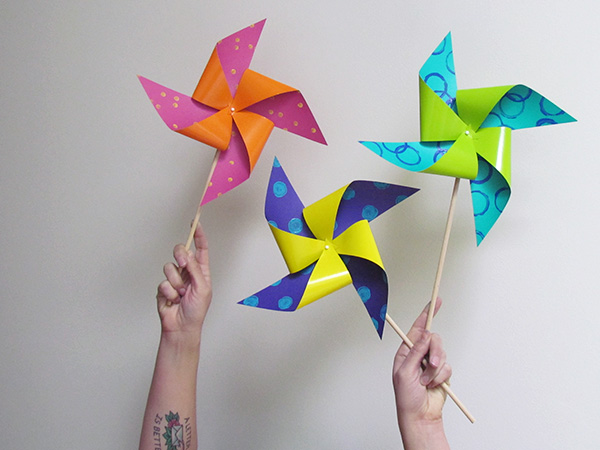
You will need:
- square cardstock, ideally different colors on each side
- scissors or x-acto
- ink for printing, either water-based block printing or stamp pads
- ink tray + brayer if using block printing ink
- circular tools for printing – pencil eraser, wine cork, empty cardboard tape ring
- dowel rods
- small tacks/pins
- scrap piece of cardboard
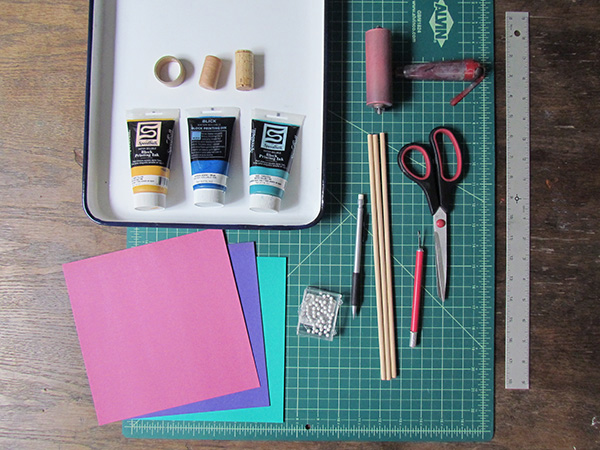
Gather your materials. Try to work with colored cardstock. You can test out other papers to see if they hold up to lots of blowing and twirling. If you have colored ink pads (I didn’t…) then I would use those before turning towards block printing ink, as the prints will take less time to dry.
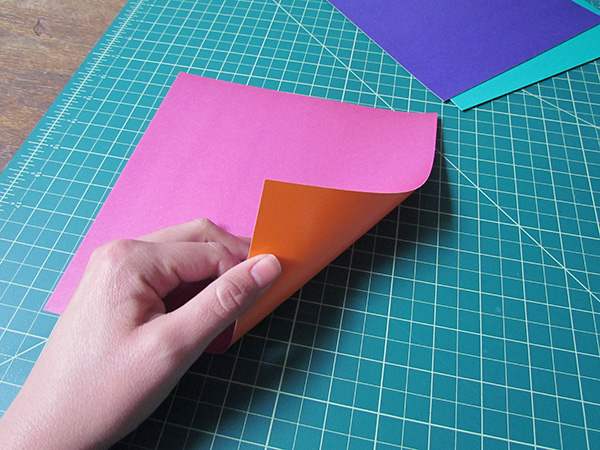
If you can find paper that is different colors on each side, it will add to the colorful pop of the pinwheels. If not, no biggie. Just work with whatcha got.
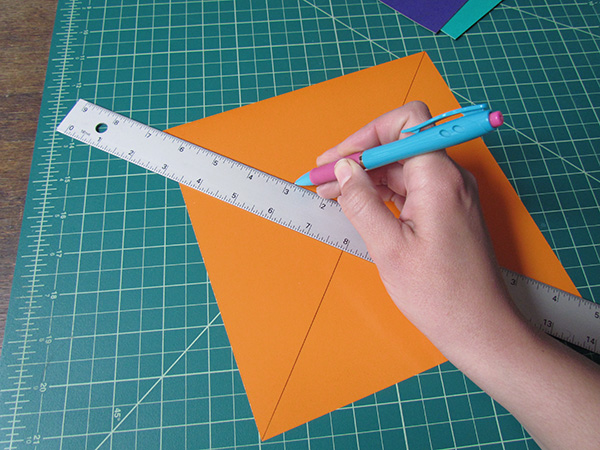
Before you begin printing, go ahead and draw two lines of the backside of your printing side. Use a ruler and a pen to line up opposite corners and draw a line, making a big X across the paper.
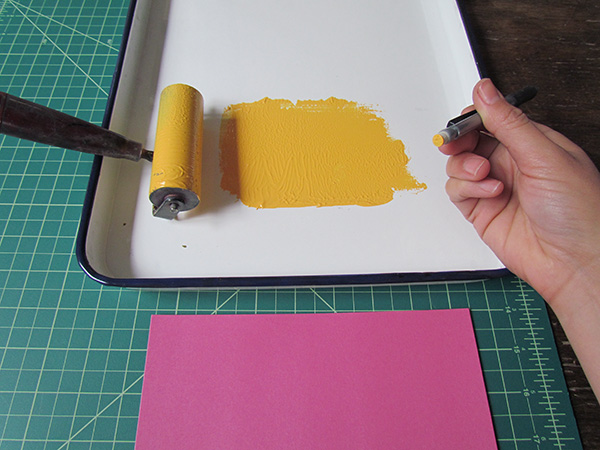
Now for printing fun! Roll out some ink in a tray. Dip your pencil eraser in the ink and go to town. Pencil erasers make the perfect tiny dot.
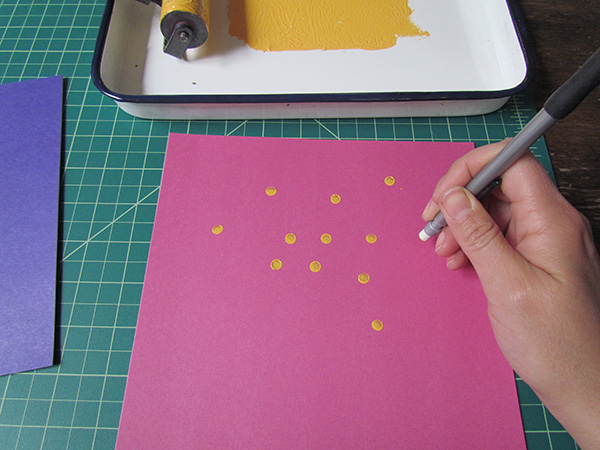
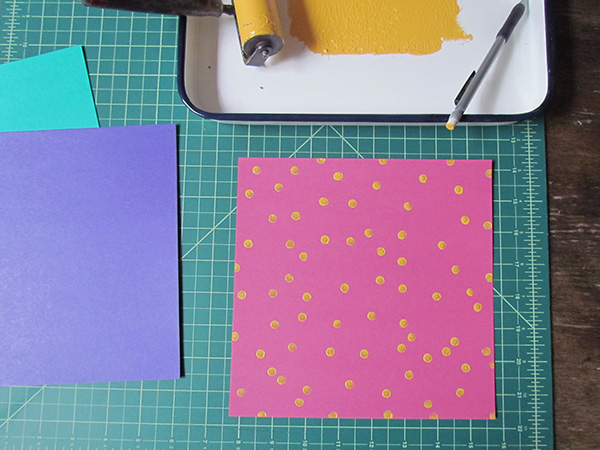
Feel free to just use a pencil eraser for all your printing, or grab some other circular items to print with. Here, I’m using a wine cork for a larger circle blob.
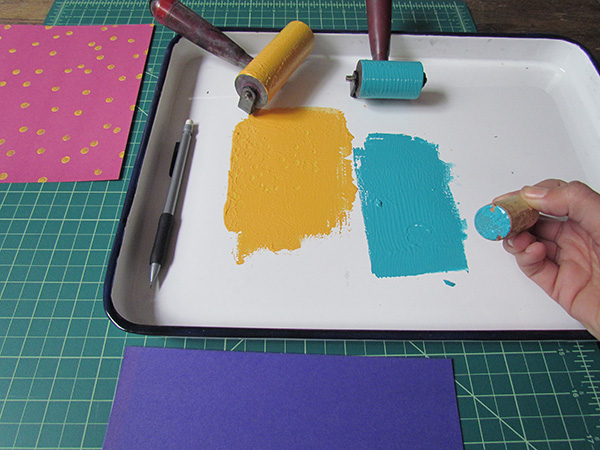
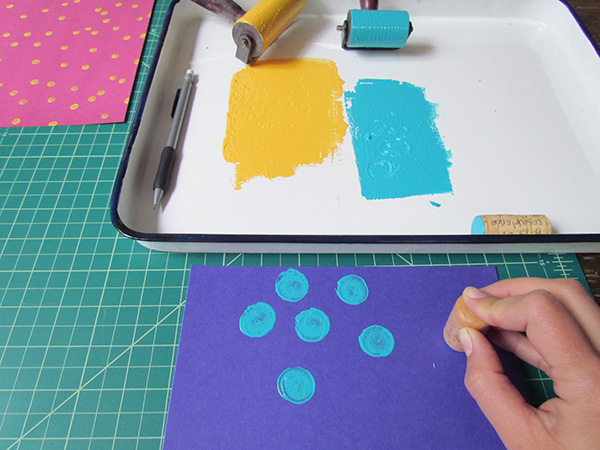
I also had an empty tape roll on hand. I recommended scouting out other circular items in your recycling bin, like a toilet paper roll or yogurt container.
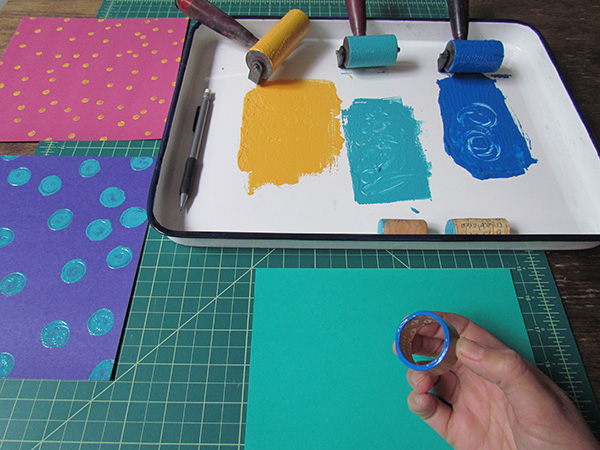
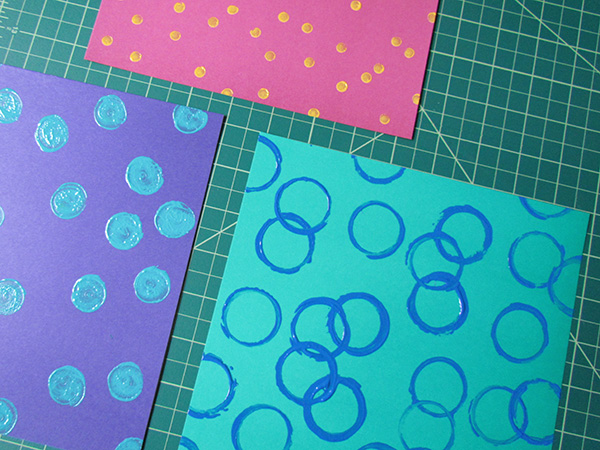
After the prints have thoroughly dried, grab your scissors and begin to cut on the lines that you drew at the beginning. Cut on each line until you get about an inch away from the center point – then stop!
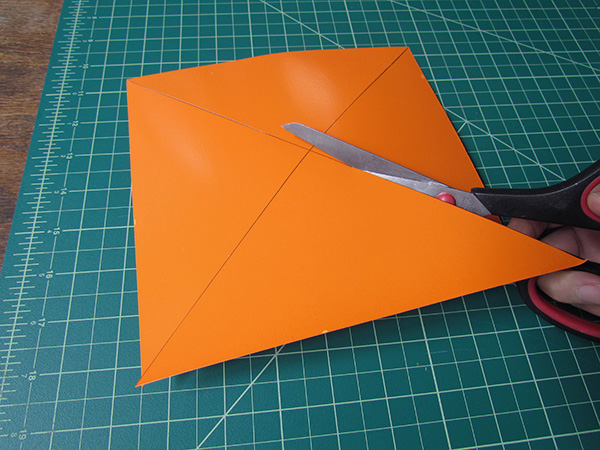
Now for the only tricky part … pinning them all together. First, unless these are going to be purely decorative and you don’t want them to spin, you’re going to want to cut out a few dime-sized circles out of cardboard. This will help the pinwheels spin. Set the cardboard circles aside.
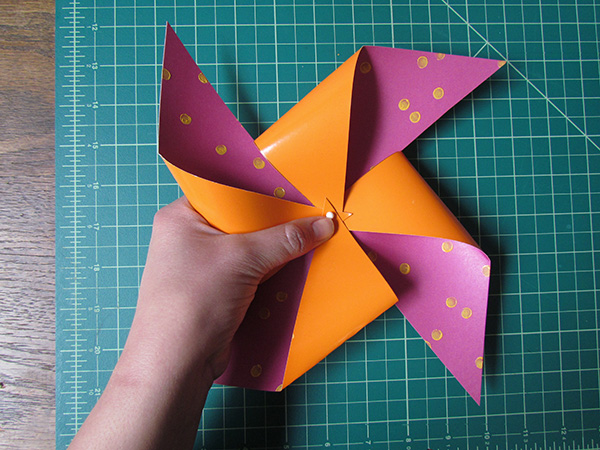
Begin by folding down every other corner of the pinwheel and hold in one hand. Grab the pin with your other hand and push through the center, making sure you are going through all 4 corners that you are holding down. Grab one of your cardboard circles and press it in between the paper pinwheel and the wooden dowel rod. I find that a couple long presses in the dowel does the trick for me, but then again, I don’t have a 4-year-old that’s going to run around with it. So if you do, you might want to add a dab of glue before jamming into the dowel.
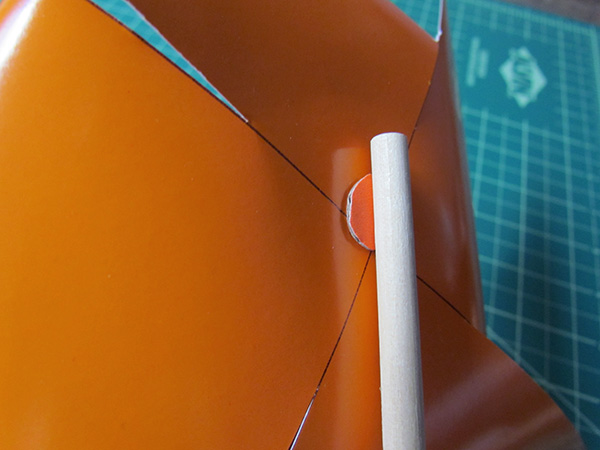
Lastly, if you really want some good spin action, you’ll need to play around with moving the paper around so that it it doesn’t hit the dowel rod when you try to spin it.
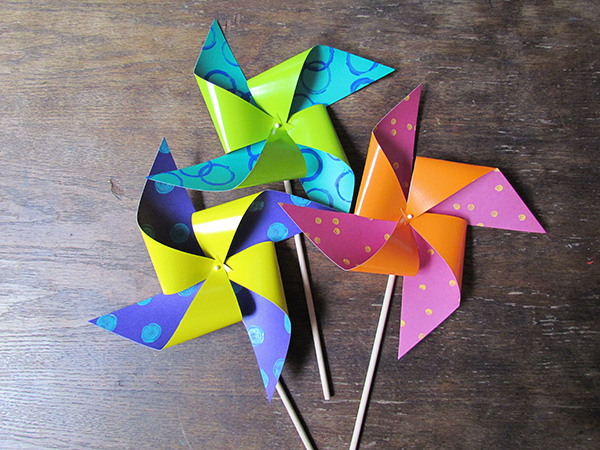
So there you have it – springtime pinwheels + insta mood lifter!
———————————————————————————————————————————–
Bonnie Kaye Whitfield designs and screen prints home textiles + paper goods under the name, Bonnie Kaye Studio. Products are created to inspire memories at home and around the table. A donation is made with every purchase to help feed hungry Americans.
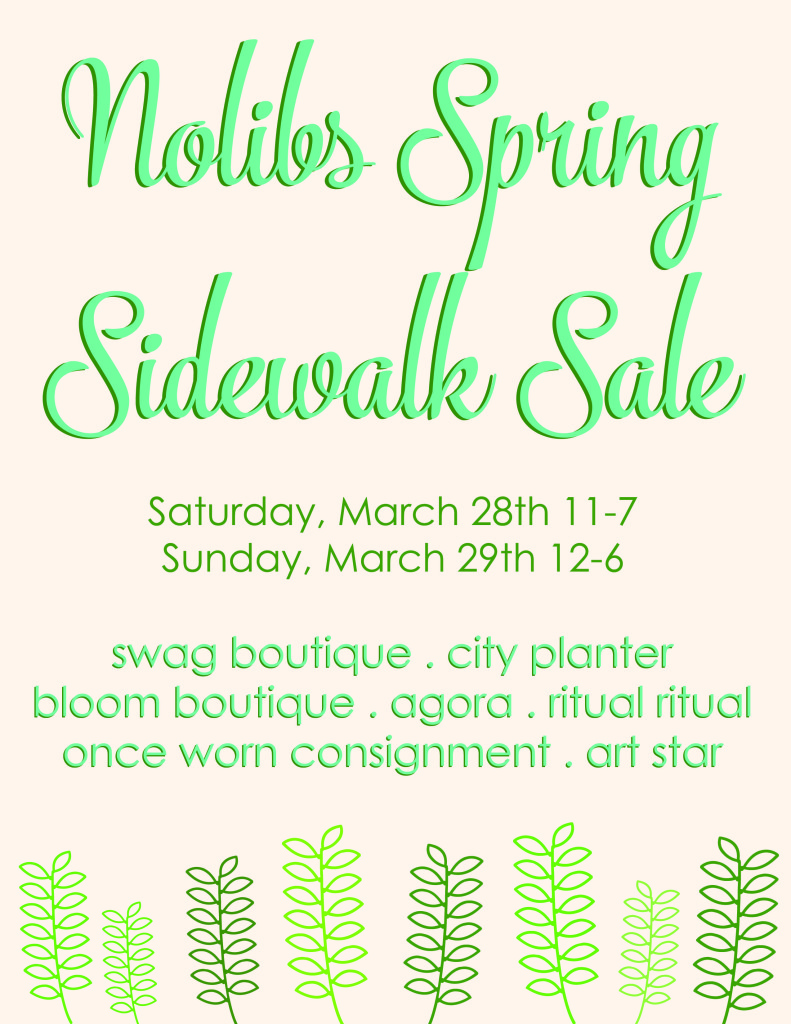

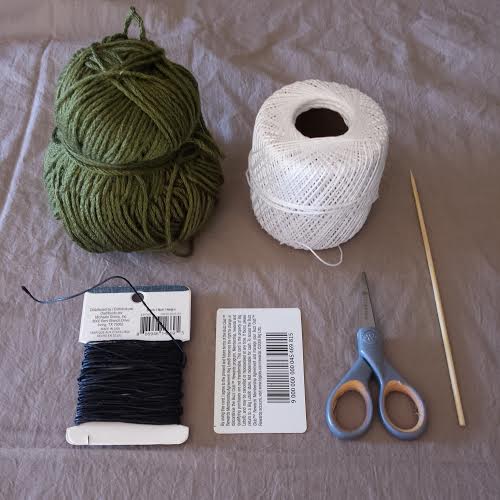













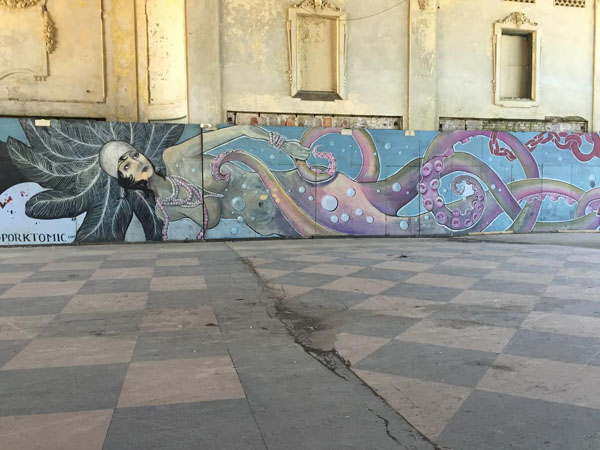


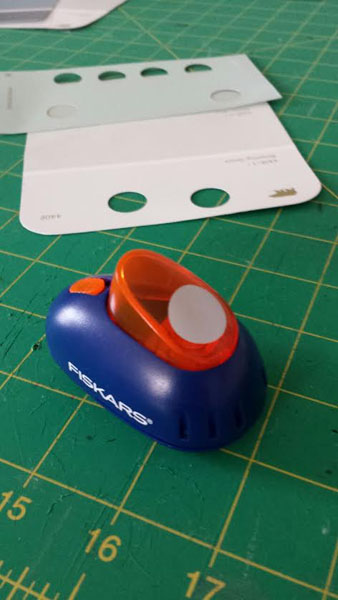
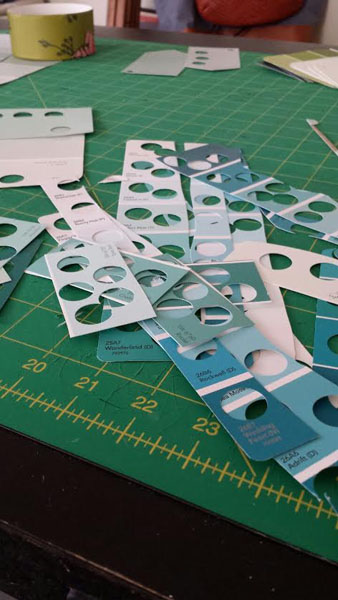
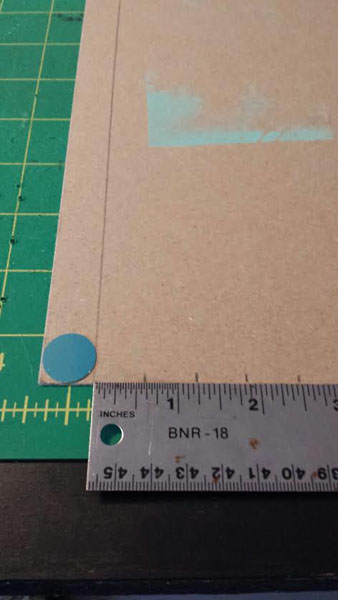
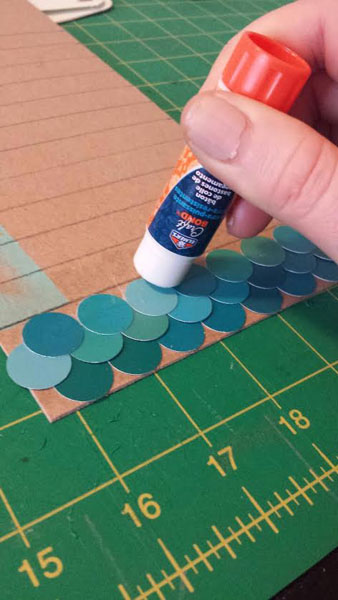

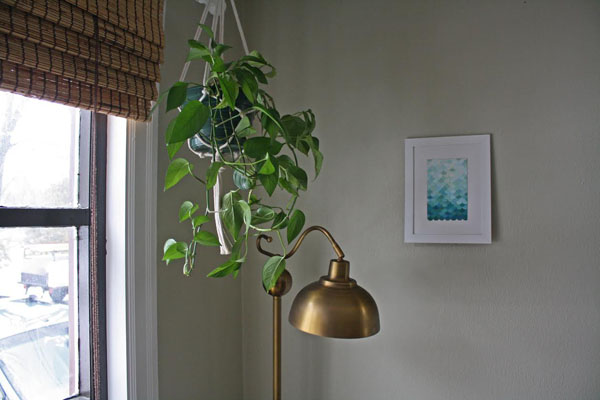
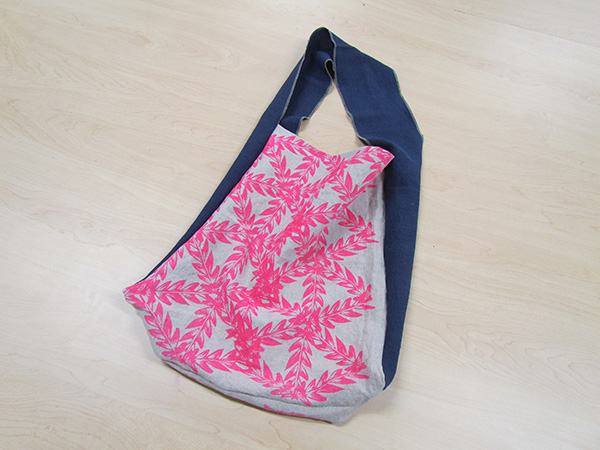
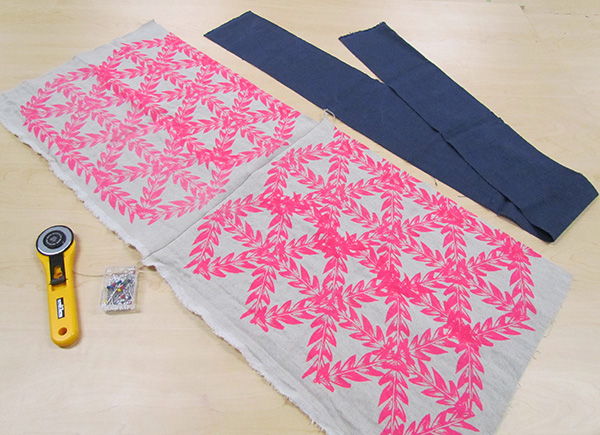
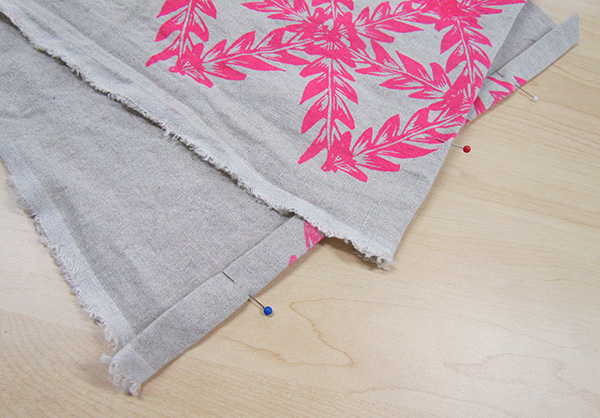
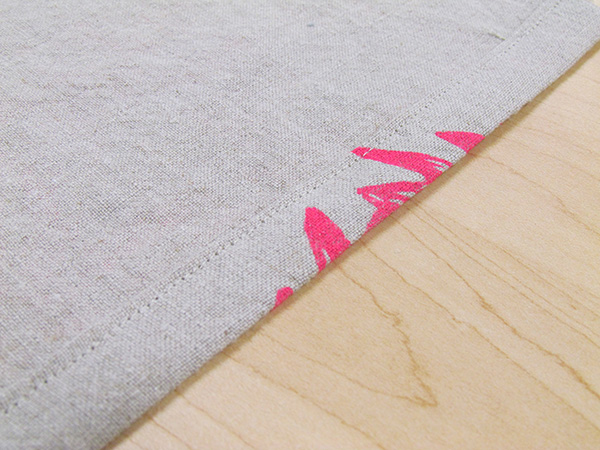
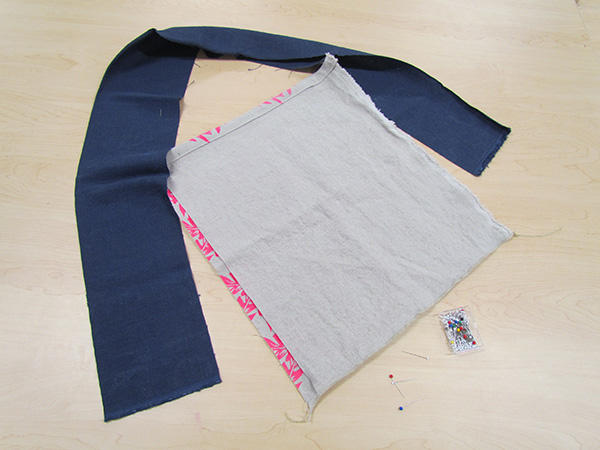
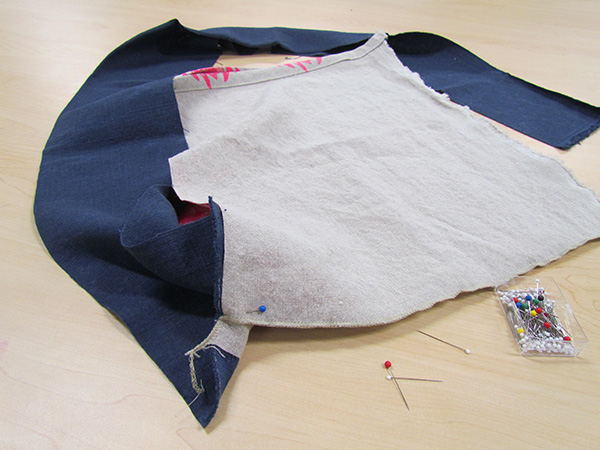
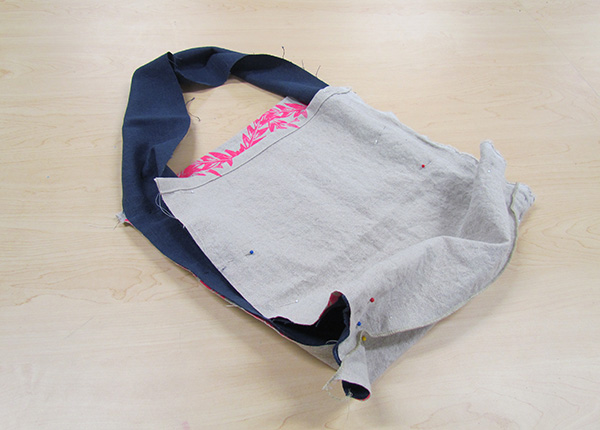
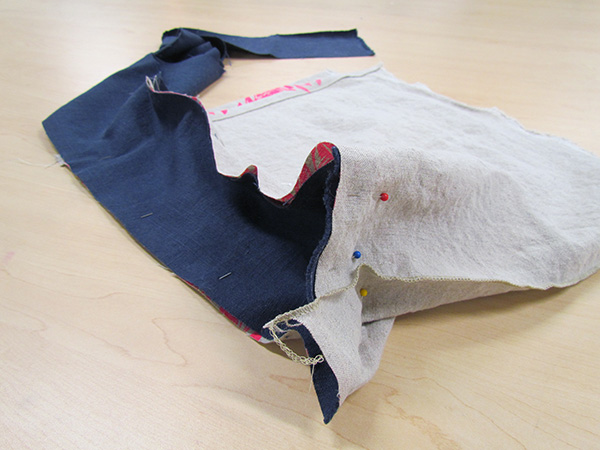
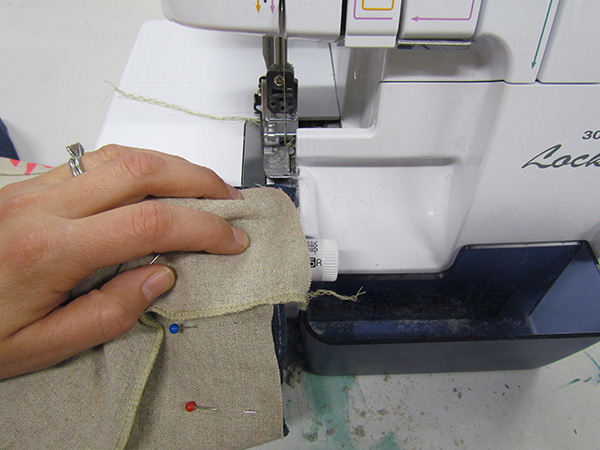
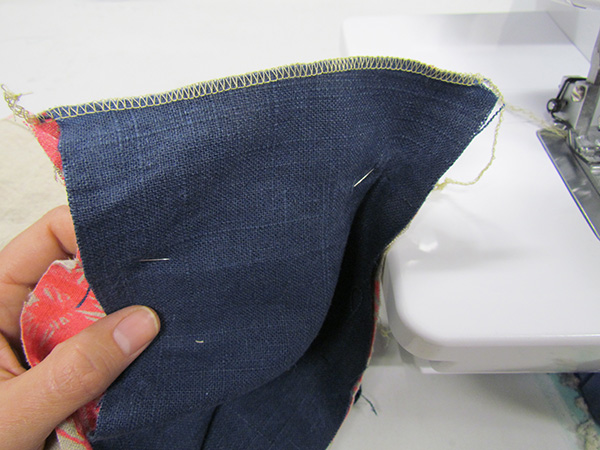
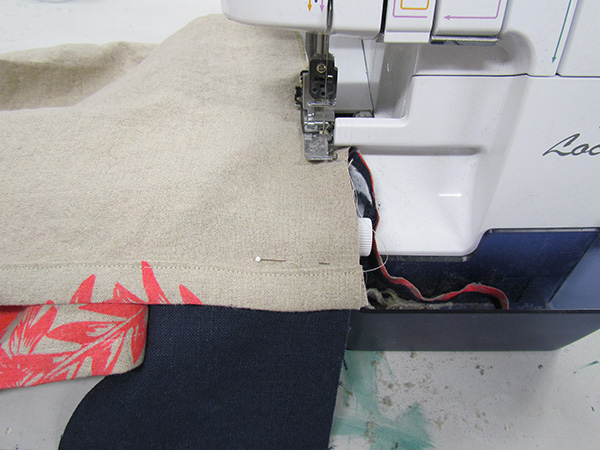
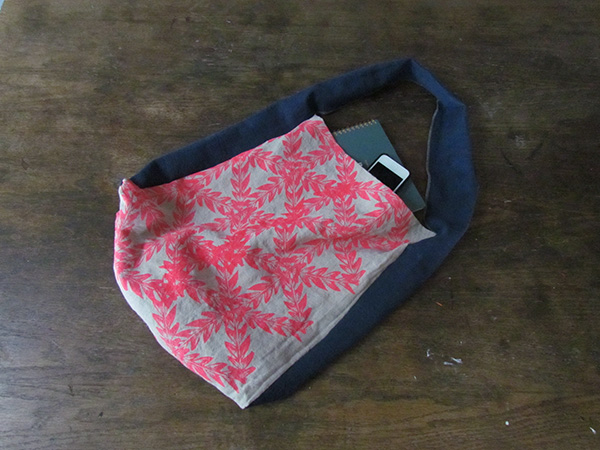





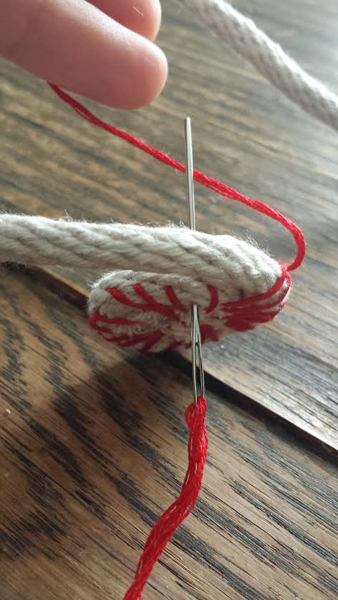







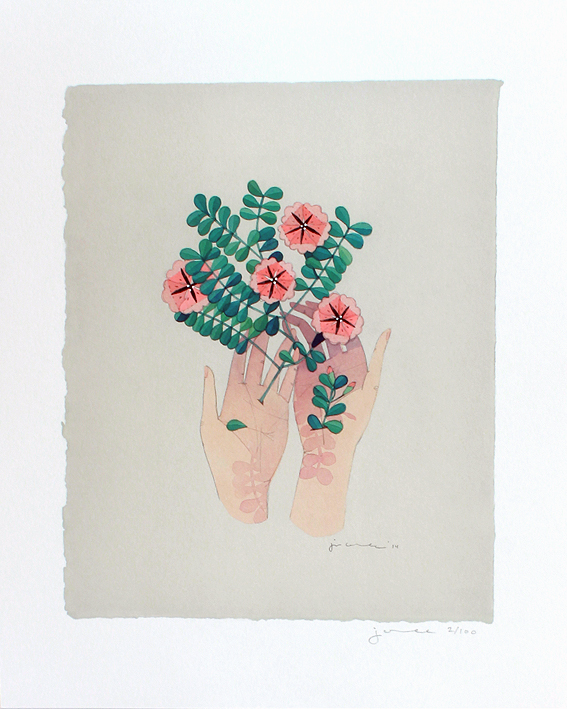 This print is of an original piece titled “Root” from Jen Corace’s solo exhibition at Art Star. It is an archival pigment print on Hahnemuhle 100% cotton rag paper. We use Silicon Fine Art Printing here in Philadelphia, so it is extremely high quality. It is a signed, limited edition of 100 and is $40. Buy it
This print is of an original piece titled “Root” from Jen Corace’s solo exhibition at Art Star. It is an archival pigment print on Hahnemuhle 100% cotton rag paper. We use Silicon Fine Art Printing here in Philadelphia, so it is extremely high quality. It is a signed, limited edition of 100 and is $40. Buy it 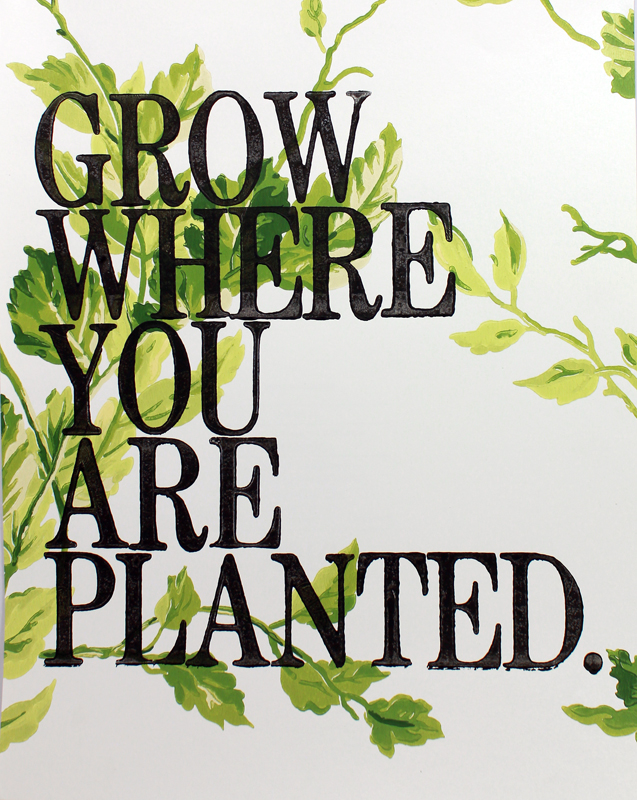 You’ll see there is a theme here. I have plants and nature on my brain. This print is by Minneapolis based artist, Amy Rice. Amy is a prolific artists whose work we’ve carried since we opened in 2004. She is one of our absolute favorites! Luckily for my wallet, Amy offers a line of affordable art prints like this one. She enjoys painting/printing on antique letters, journal entries, maps and even high end wallpaper, like this one. This is a hand set and hand pulled letterpress print. I just love it! $40 Buy it
You’ll see there is a theme here. I have plants and nature on my brain. This print is by Minneapolis based artist, Amy Rice. Amy is a prolific artists whose work we’ve carried since we opened in 2004. She is one of our absolute favorites! Luckily for my wallet, Amy offers a line of affordable art prints like this one. She enjoys painting/printing on antique letters, journal entries, maps and even high end wallpaper, like this one. This is a hand set and hand pulled letterpress print. I just love it! $40 Buy it 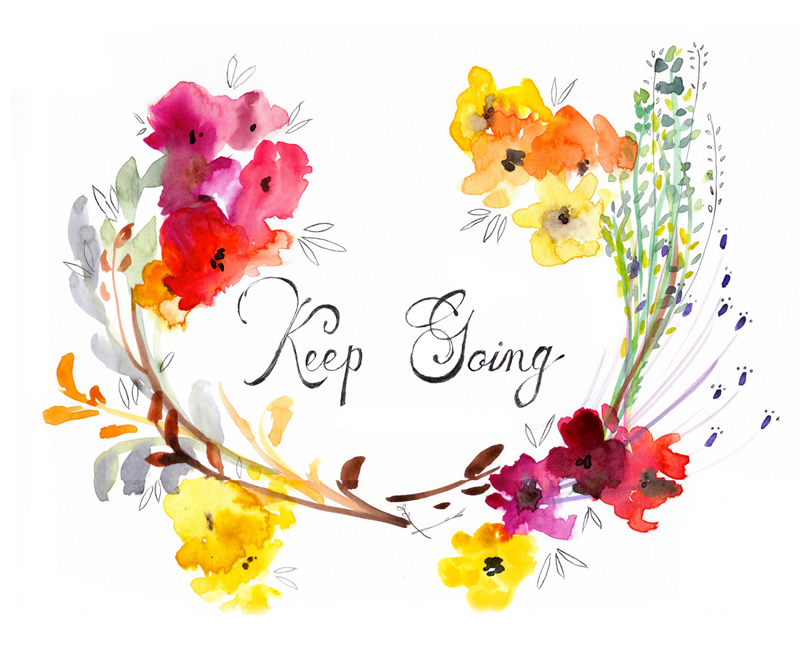 Another floral piece with a motivational phrase. I need it this time of year! I love Mai Autumn’s delicate watercolors, they are so beautiful! This one will also add a nice pop of color to any room! This piece is available in both 8×10 and 11×14, which are both standard frame sizes. Printed with archival inks on Canon Pro Luster Pape and $20/$35, depending on which size you choose. Buy it
Another floral piece with a motivational phrase. I need it this time of year! I love Mai Autumn’s delicate watercolors, they are so beautiful! This one will also add a nice pop of color to any room! This piece is available in both 8×10 and 11×14, which are both standard frame sizes. Printed with archival inks on Canon Pro Luster Pape and $20/$35, depending on which size you choose. Buy it 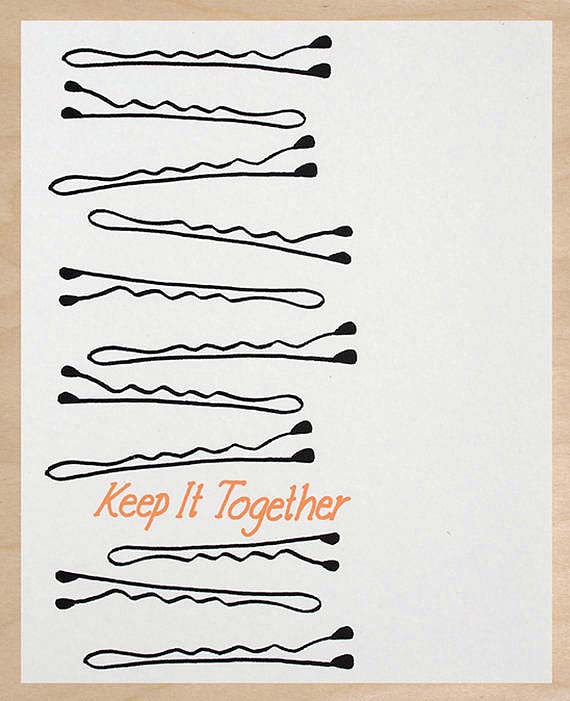 A daily reminder – ha! Plus, it makes me laugh a little b/c there are seriously bobby pins all over my house. In the oddest places too! For this reason, I think they are the bane of my husband’s existence. Just kidding. This is a screenprint by Bryan Sculthorpe of Yardsale Press, who I fondly refer to as “talls” because he is a giant and I am a midget. Just $15 – buy it
A daily reminder – ha! Plus, it makes me laugh a little b/c there are seriously bobby pins all over my house. In the oddest places too! For this reason, I think they are the bane of my husband’s existence. Just kidding. This is a screenprint by Bryan Sculthorpe of Yardsale Press, who I fondly refer to as “talls” because he is a giant and I am a midget. Just $15 – buy it 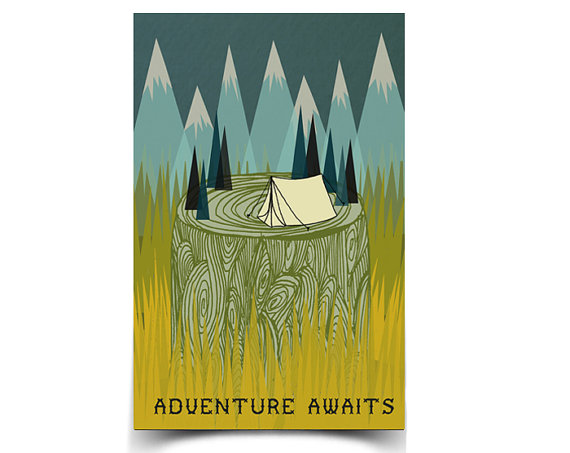 My husband and I have already begun planning our camping trips! This reminds me that in a few months we’ll be sleeping under the stars. I. cannot. wait. This is an 11×17″ poster illustrated by Andrea Lauren of Paper Sparrow and it is printed with vegetable + soy based inks. $18. Buy it
My husband and I have already begun planning our camping trips! This reminds me that in a few months we’ll be sleeping under the stars. I. cannot. wait. This is an 11×17″ poster illustrated by Andrea Lauren of Paper Sparrow and it is printed with vegetable + soy based inks. $18. Buy it 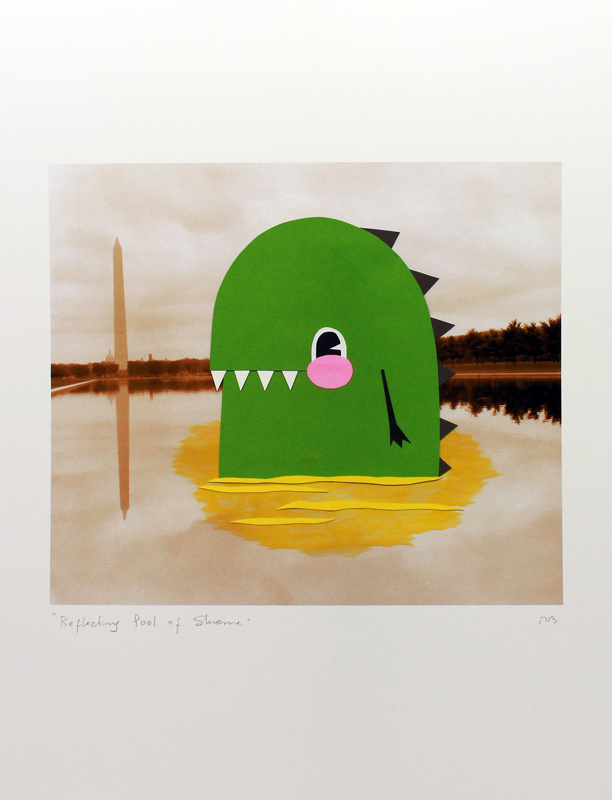 And finally, this gem. Because I love art with a sense of humor most of all. It is titled “Reflecting Pool of Shame”. It is a reproduction of an original painting on top of a photograph by Mauro Biaocco of Naughty + Nice. It was printed using archival ink and paper. Don’t lie, you’ve been there! $20 Buy it
And finally, this gem. Because I love art with a sense of humor most of all. It is titled “Reflecting Pool of Shame”. It is a reproduction of an original painting on top of a photograph by Mauro Biaocco of Naughty + Nice. It was printed using archival ink and paper. Don’t lie, you’ve been there! $20 Buy it 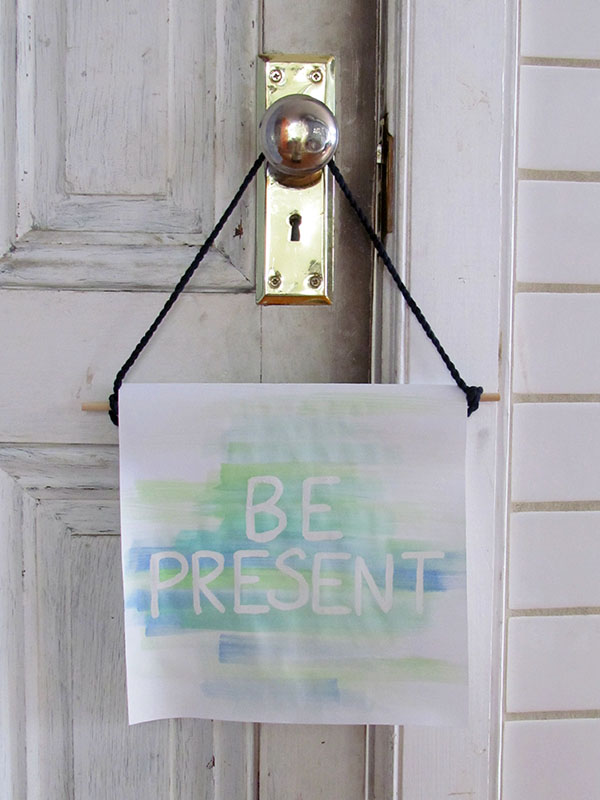
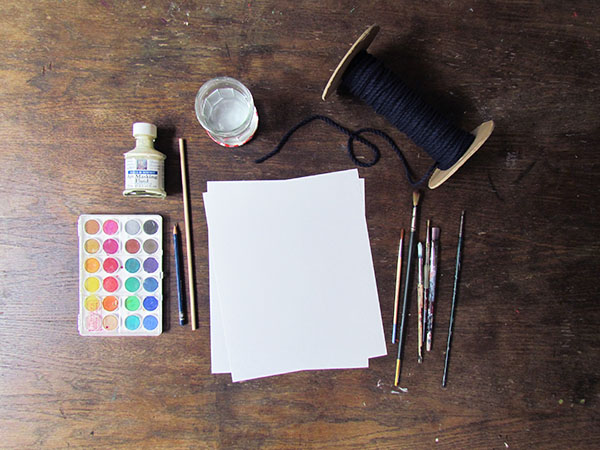
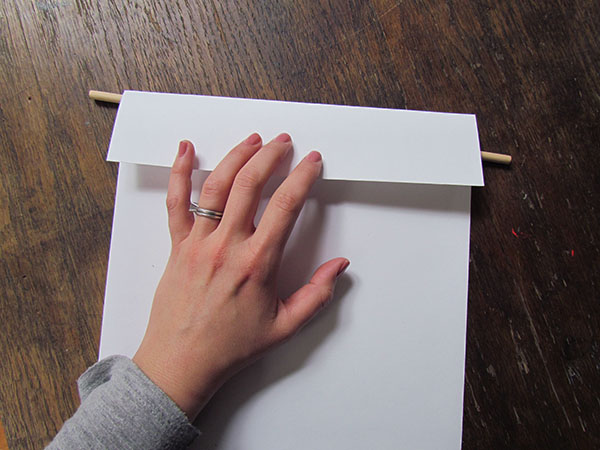
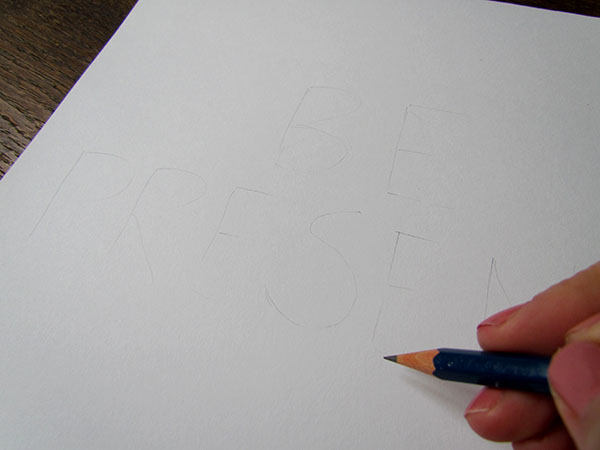
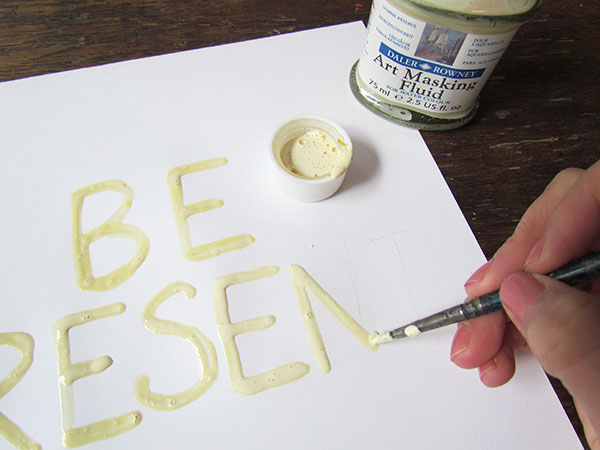
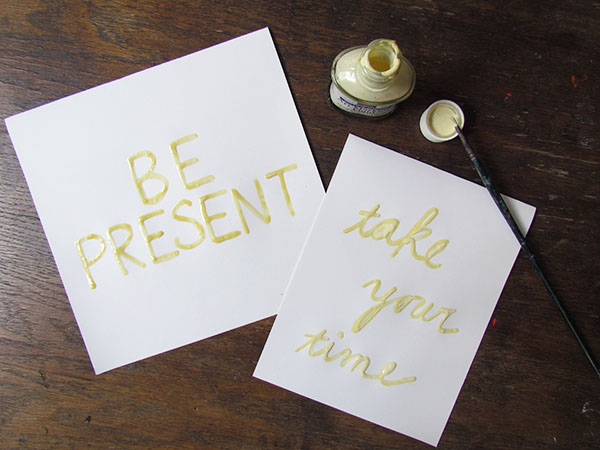
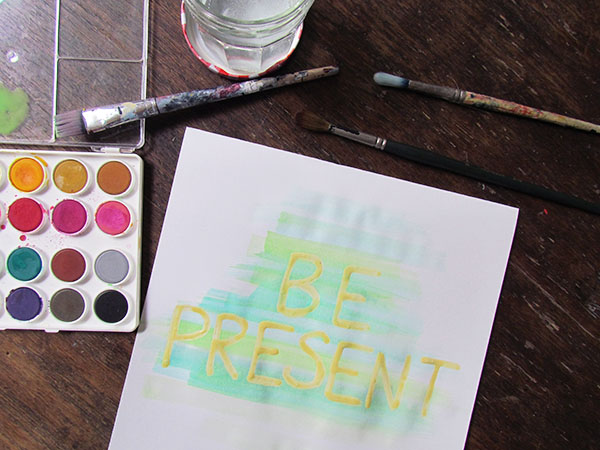
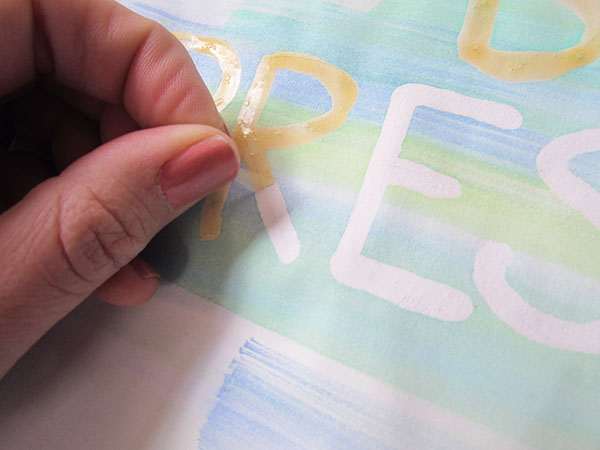
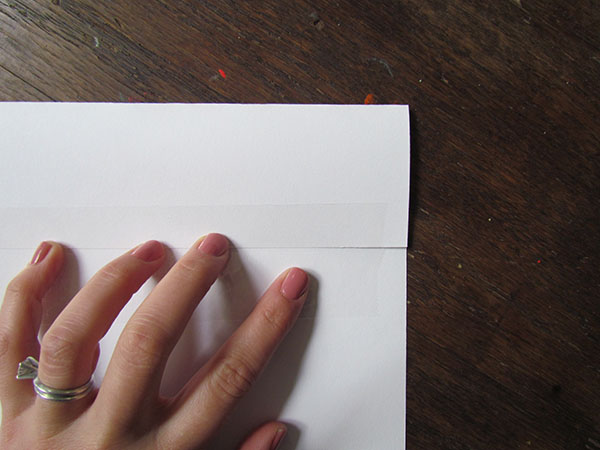
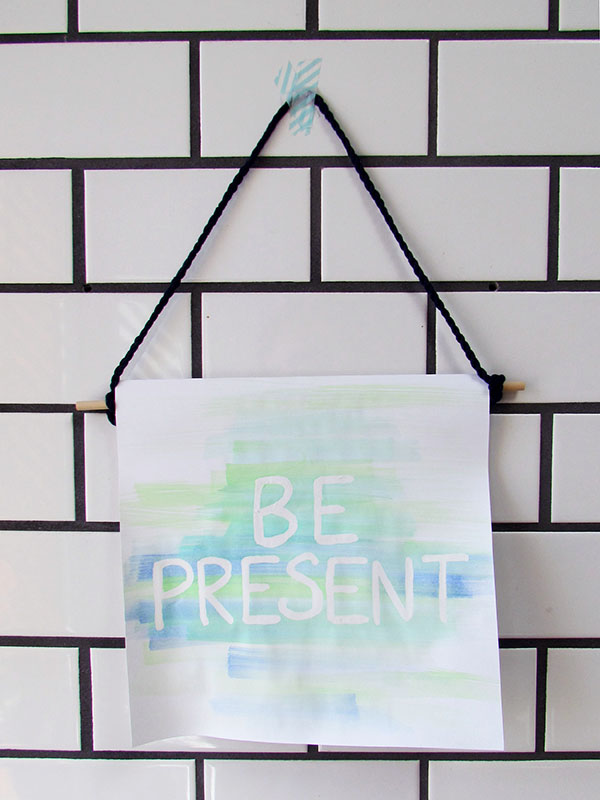





 Sign up for our bi-annual mailing
here.
Sign up for our bi-annual mailing
here.